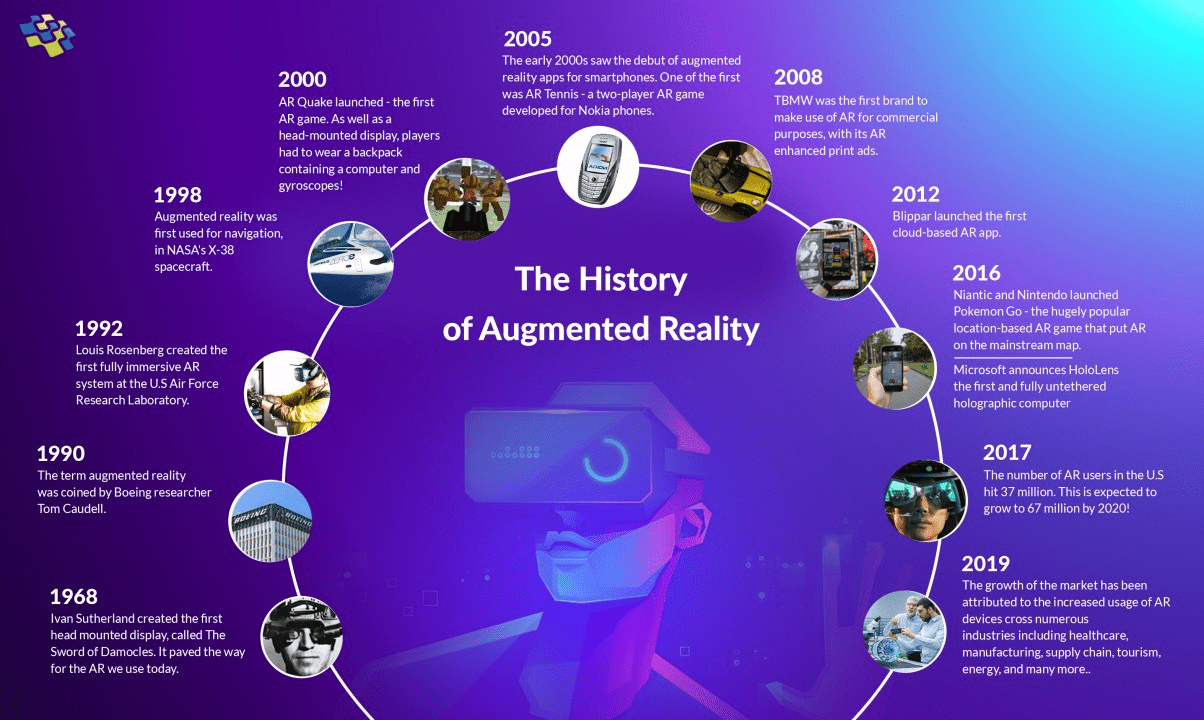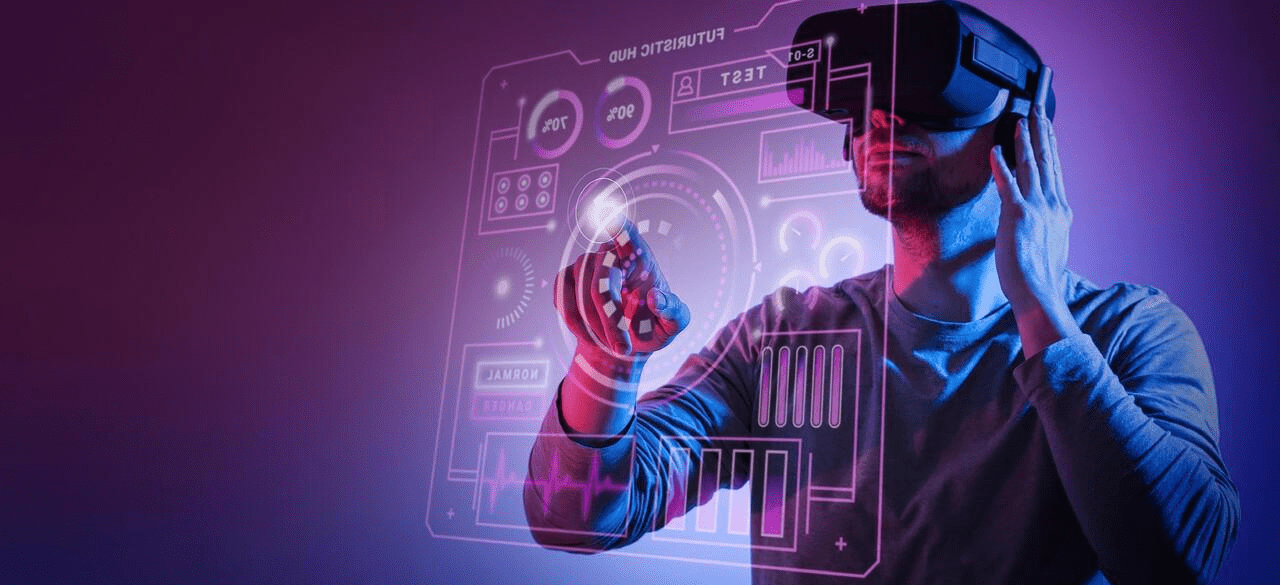
The future of augmented reality in gaming: Exploring the potential for Augmented Reality gaming and its impact on the gaming industry. In recent years, the gaming industry has witnessed a transformative evolution with the integration of augmented reality (AR) technology.

Augmented reality, which overlays digital elements onto the real world, can potentially redefine the gaming experience. This article delves into the future of augmented reality in gaming, exploring the possibilities it offers and the profound impact it may have on the gaming industry.
I. The Evolution of Augmented Reality in Gaming

A. Early Stages and Milestones of Augmented Reality
The journey of augmented reality in gaming can be traced back to early experiments, such as the 2016 phenomenon, Pokémon Go. The widespread success of this mobile game showcased the immense potential of AR, as millions of players engaged with a virtual world superimposed on their physical surroundings.
B. Technological Advancements of Augmented Reality

Advancements in AR technology have been pivotal in shaping the future of AR gaming. Developing more sophisticated sensors, improved graphics capabilities, and enhanced device processing power has enabled a more immersive and realistic AR gaming experience.
II. Potential Applications of Augmented Reality in Gaming

A. Enhanced Immersion and Realism:
One of the primary promises of AR in gaming is the heightened level of immersion and realism it brings to gameplay. By seamlessly blending digital content with the real world, players can experience games in a way that goes beyond the confines of traditional gaming environments.
B. Social and Multiplayer Experiences
AR has the potential to revolutionize social and multiplayer gaming. With shared AR experiences, players can collaborate and compete in real-world spaces, fostering a new level of social interaction and engagement. This opens doors for innovative multiplayer games that leverage the physical environment as a dynamic and shared playground.
C. Gamification of the Real World
Beyond traditional gaming scenarios, AR offers the possibility of gamifying real-world activities. Fitness, education, and even mundane daily tasks can be transformed into interactive and enjoyable experiences, promoting a healthy and active lifestyle.
III. Challenges and Considerations
A. Technical Limitations
While AR gaming holds immense promise, it also faces technical challenges. Issues such as tracking accuracy, device limitations, and potential safety concerns need to be addressed for a seamless and secure AR gaming experience.
B. User Acceptance and Accessibility
The success of AR gaming relies heavily on user acceptance and accessibility. Overcoming barriers related to cost, device compatibility, and ease of use will ensure that AR gaming becomes mainstream and attracts a diverse player base.
IV. Impact on the Gaming Industry

A. Market Growth and Revenue Opportunities
As AR gaming gains traction, it presents significant opportunities for market growth and revenue generation. Game developers and publishers are exploring new business models and monetization strategies, including in-app purchases, advertising, and premium AR content.
B. Redefining Game Design and Development
The integration of AR requires a paradigm shift in game design and development. Developers need to consider the physical environment, user interactions, and the real-time integration of digital elements. This shift opens the door for creativity and innovation in game design.
V. Future Trends and Innovations
A. Wearable AR Devices
The future of AR gaming may be closely tied to the development and adoption of wearable AR devices. Smart glasses and AR headsets have the potential to provide a more immersive and convenient AR gaming experience, untethered from traditional gaming platforms.
B. Integration with Other Technologies
The convergence of AR with other emerging technologies, such as artificial intelligence and the Internet of Things, is anticipated to create even more dynamic and sophisticated AR gaming experiences. This integration can lead to enhanced interactivity and personalization.
VI. Conclusion
In conclusion, the future of augmented reality in gaming holds immense promise, reshaping the way we perceive and engage with digital entertainment. The evolution of AR technology, coupled with creative game design and a focus on user accessibility, can propel AR gaming into mainstream adoption.
As the industry continues to explore new frontiers, the fusion of real and virtual worlds in gaming stands as a testament to the limitless possibilities that AR brings to the gaming landscape.
References
1. Pokémon Go. (n.d.). Retrieved from https://pokemongolive.com/
2. Dieter, B., & Meehan, J. (2017). Augmented Reality: A Technology and Game-Changer for Education. TechTrends, 61(5), 423–430. https://doi.org/10.1007/s11528-017-0199-9
3. Rekimoto, J. (1998). Matrix: A Real-Time Object Identification and Registration Method for Augmented Reality. In Proceedings of the 25th Annual Conference on Computer Graphics and Interactive Techniques (pp. 63–70). https://doi.org/10.1145/280814.280824
What is augmented reality (AR) gaming, and how does it differ from traditional gaming?
Augmented reality gaming involves overlaying digital elements onto the real world, blending virtual and physical environments.
Unlike traditional gaming, AR enhances the real-world experience by adding computer-generated elements, creating a more immersive and interactive gameplay.
What technological advancements are driving the future of AR gaming?
The future of AR gaming is propelled by advancements in technologies such as spatial computing, 5G connectivity, improved sensors, and more powerful mobile devices.
These elements contribute to more seamless and realistic AR experiences, expanding the possibilities for immersive gameplay.
How will AR gaming impact the gaming industry as a whole?
AR gaming is poised to revolutionize the gaming industry by providing players with new and engaging experiences.
This technology has the potential to attract a broader audience, blur the lines between physical and virtual worlds, and create innovative gameplay mechanics that redefine traditional gaming norms.
What challenges does the adoption of AR gaming face in the gaming industry?
Challenges in AR gaming adoption include hardware limitations, the need for robust and widespread AR content creation, and addressing concerns related to privacy and security.
Overcoming these challenges is crucial for the successful integration of AR into the gaming landscape.
Augmented reality gaming involves overlaying digital elements onto the real world, blending virtual and physical environments.
Unlike traditional gaming, AR enhances the real-world experience by adding computer-generated elements, creating a more immersive and interactive gameplay.
The future of AR gaming is propelled by advancements in technologies such as spatial computing, 5G connectivity, improved sensors, and more powerful mobile devices.
These elements contribute to more seamless and realistic AR experiences, expanding the possibilities for immersive gameplay. AR gaming is poised to revolutionize the gaming industry by providing players with new and engaging experiences.
This technology has the potential to attract a broader audience, blur the lines between physical and virtual worlds, and create innovative gameplay mechanics that redefine traditional gaming norms.
Challenges in AR gaming adoption include hardware limitations, the need for robust and widespread AR content creation, and addressing concerns related to privacy and security.
Overcoming these challenges is crucial for the successful integration of AR into the gaming landscape.







